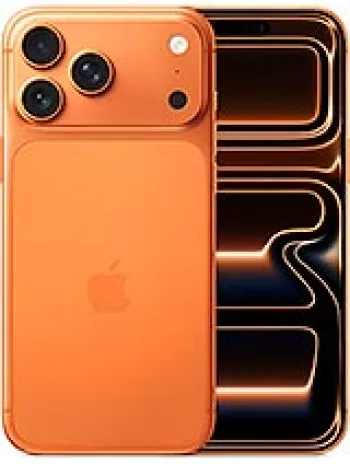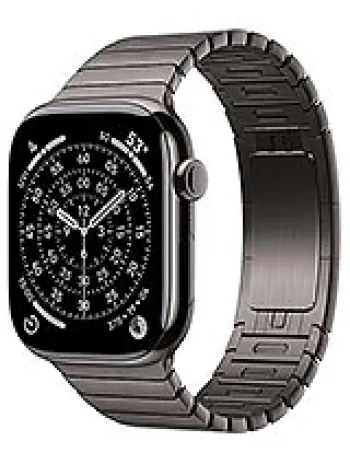
Design and Build
The Apple iPhone 7 introduced a fresh form factor with notable changes to its predecessors. Measuring 138.3 x 67.1 x 7.1 mm and weighing just 138 grams, it strikes a balance between ergonomics and elegance. The use of high-quality aluminum for the back and frame, paired with a glass front, endows the device with a premium feel which Apple is known for. The device was available in colors like Jet Black, Black, Silver, Gold, Rose Gold, and Red, giving users multiple choices to reflect their personal style. Its IP67 rating provided dust and water resistance, which was a highly welcomed feature at the time of its release.
Display
The iPhone 7 features a 4.7-inch Retina IPS LCD display offering a resolution of 750 x 1334 pixels. With a pixel density of approximately 326 ppi, users experienced sharp visuals consistent with what Apple calls Retina Display. This screen also boasts a typical brightness of 625 nits, making it legible under direct sunlight. Protected by Ion-strengthened glass, and featuring an oleophobic coating, the display of the iPhone 7 was durable and resistant to fingerprints. The contrast ratio of 1603:1 allows for richer colors and deeper blacks, enhancing the multimedia experience.
Performance
At its core, the iPhone 7 is powered by the Apple A10 Fusion chipset, manufactured with a 16 nm process. This quad-core processor, comprising two high-performance Hurricane cores and two energy-efficient Zephyr cores, introduced a significant performance increase over previous models. The device's GPU is a six-core PowerVR Series7XT Plus, which catered to high-end graphics requirements, including gaming and video playback. With 2GB of RAM, multitasking and app performance are fluid and efficient. The device initially launched with iOS 10.0.1 and is upgradable to iOS 15.8.1, keeping it compatible with many modern applications and security updates.
Camera
One of the standout features of the iPhone 7 is its camera system. The main rear camera is a 12 MP unit with an aperture of f/1.8, offering optical image stabilization (OIS) and phase detection autofocus (PDAF). This camera configuration allows for exceptional low-light performance and sharp images. It supports 4K video recording at 30fps and slow motion at 1080p at 120fps and 720p at 240fps. Additionally, it features quad-LED dual-tone flash for balanced lighting. The front-facing camera is a 7 MP shooter with f/2.2 aperture, supporting face detection and HDR. This camera enables high-quality selfies and 1080p video recording.
Battery Life
The iPhone 7 comes equipped with a 1960 mAh Li-Ion battery that is non-removable, providing up to 14 hours of talk time on 3G networks. Despite the smaller capacity compared to some of its Android competitors at the time, optimizations in iOS and the A10 Fusion chipset ensure a respectable endurance rating of 61 hours. Users often find that the handset can last through a full day of average use without needing a charge. Although the device does not support wireless charging or fast charging, its battery life is complemented by an efficient power management system.
Storage and Memory
The iPhone 7 was available in three storage configurations: 32GB, 128GB, and 256GB, each paired with 2GB of RAM. This range of options catered to different user needs, from casual users to those requiring extensive storage for media and apps. However, the lack of a microSD card slot meant users had to choose their storage capacity carefully at the time of purchase. This decision has often been a point of contention for potential buyers, although Apple iPhone users traditionally grew acclimated to cloud-based storage solutions like iCloud.
Audio and Connectivity
The iPhone 7 marked the departure from the traditional 3.5mm headphone jack, a move that was controversial at its launch. Instead, Apple provided superior stereo speakers and included EarPods that connect via the device’s Lightning port, as well as an adapter for traditional headphone users. The device supports a range of connectivity options including Wi-Fi 802.11 a/b/g/n/ac, Bluetooth 4.2, and NFC for Apple Pay. Its GPS capabilities are enhanced with GLONASS, GALILEO, and QZSS support, providing accurate location tracking.
Network and Sensors
The iPhone 7 supports various network technologies such as GSM, CDMA, HSPA, EVDO, and LTE with an impressive range of frequency bands, ensuring global roaming capabilities. The phone utilizes a Nano-SIM slot. In terms of sensors, the device is packed with a front-mounted fingerprint sensor, accelerometer, gyro, proximity sensor, compass, and barometer. These features enable advanced functionalities such as augmented reality applications, improved indoor navigation, and fitness tracking capabilities.
Price and Availability
Upon its release in 2016, the iPhone 7 was positioned as a flagship device, with a price reflecting its premium status. Over the years, as newer models have been introduced, its price has decreased, making it more accessible to a broader audience seeking a reliable Apple experience without the latest features. Initially retailing for around 180 EUR, the price of a used or refurbished iPhone 7 has become quite competitive in the market.
Conclusion
Even long after its initial release, the iPhone 7 remains a solid option in the used smartphone market. Its balance of performance, camera capabilities, and design appeal to people seeking a dependable and efficient device without the bells and whistles of the latest models. Although discontinued, it supports updates up to iOS 15.8.1, keeping it relevant in terms of software and security. As such, it continues to be a viable choice for those ingrained in the Apple ecosystem or those transitioning from older models.
Main Features of Apple iPhone 7
- Supports GSM, CDMA, HSPA, EVDO, and LTE technologies for wide network compatibility.
- Compact design with dimensions of 138.3 x 67.1 x 7.1 mm and a weight of 138 g.
- Durable build using Corning-made glass front and aluminum frame and back.
- 4.7-inch Retina IPS LCD display with a brightness of 625 nits for clear visibility.
- Resolution of 750 x 1334 pixels providing sharp and vibrant visuals.
- Powered by Apple A10 Fusion chip with Quad-core CPU for efficient performance.
- Available internal storage options: 32GB, 128GB, and 256GB with 2GB RAM.
- 12 MP main camera with features like OIS, PDAF, Quad-LED dual-tone flash, HDR, and 4K video recording.
- 7 MP front camera supporting 1080p video recording and HDR for clear selfies.
- Front-mounted fingerprint sensor enhancing security and quick access.
- Stereo speakers for an enhanced audio experience.
- Supports NFC for easy transactions and connectivity.
- Available in multiple colors including Jet Black, Black, Silver, Gold, Rose Gold, and Red.
- Upgradable iOS software, from iOS 10.0.1 to iOS 15.8.1.
Disadvantages of Apple iPhone 7
- Lacks a 3.5mm headphone jack, requiring adapters for traditional headphones.
- Non-expandable memory with no card slot for adding additional storage.
- Battery capacity of 1960 mAh is relatively small, offering limited battery life compared to newer models.
- No radio functionality is available.
- Bluetooth version 4.2, which is less efficient compared to newer versions.
- Discontinued status, meaning no further official updates or support from Apple.
- Older chipset (Apple A10 Fusion) may lead to slower performance compared to recent models.
- The screen-to-body ratio (~65.6%) is lower compared to modern smartphones with full-screen displays.



































View Also
More Phones
All Rights Reserved +14267 Phones © Mobilawy 2025
























